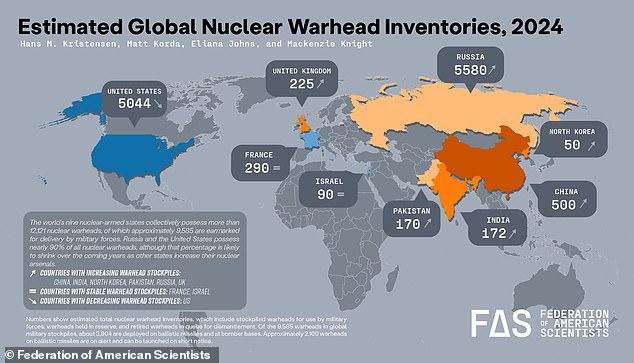The world is on edge once again after President Donald Trump ordered the Pentagon to resume nuclear weapons testing for the first time in more than 30 years.
Scientists, environmentalists, and international leaders are voicing deep concern that this move could push the planet dangerously close to a new global arms race — and possibly a catastrophic conflict.
A Decision That Could Ignite a “Chain Reaction”
Experts had been warning for months that if the U.S. ever restarted nuclear tests, it could set off a domino effect across the world. Now, that fear may be coming true.
Geologist Sulgiye Park from the Union of Concerned Scientists described the move in stark terms, saying, “It’s like striking a match in a room full of dynamite.”
The decision, she and others warn, could cause other countries to abandon the long-standing nuclear test ban treaty and begin their own weapons experiments in retaliation.
The End of a 30-Year Pause
The United States last conducted a nuclear test in 1992, when President George H. W. Bush imposed a moratorium on such testing.
That pause was later reinforced by the Comprehensive Nuclear-Test-Ban Treaty (CTBT), signed by 187 nations — though the U.S. never officially ratified it.
Trump’s new directive marks a major reversal of that decades-long policy.
He told the Department of War to begin testing “immediately,” claiming it was a necessary response to growing nuclear threats from Russia and China.
Scientists Say There’s No Scientific Justification
Former National Nuclear Security Administration chief Jill Hruby, who served under the Biden Administration, called the move “a very bad idea.”
She emphasized that U.S. scientists already have enough technical knowledge to maintain the safety and reliability of the country’s nuclear arsenal without detonating actual bombs.
“What we’ve been saying for decades,” Hruby explained, “is that there’s no scientific reason to test.”
But she also warned that other nations might not have the same experience or safety standards — and their experiments could cause deadly radioactive leaks.
The Environmental and Safety Fallout
Underground nuclear blasts, while designed to contain radiation, can still cause cracks in the Earth’s surface that release harmful radioactive materials.
Experts caution that if other nations rush to imitate the U.S., the risk of accidents and contamination could skyrocket — especially in regions without proper safeguards.
The U.S. itself conducted more than 1,000 nuclear tests in Nevada between the 1940s and 1992.
Other countries, including Russia, added roughly the same number worldwide.
Many of those tests left behind long-term environmental damage and radiation exposure risks that persist today.
Rising Tensions With Russia and China
The timing of Trump’s decision is particularly alarming because the New START Treaty — a key U.S.-Russia agreement limiting nuclear arsenals — is set to expire in 2026.
With that safety net disappearing, both the U.S. and Russia have accused each other of violating past arms control agreements.
“Because of other countries’ testing programs, I have instructed the Department of War to start testing our nuclear weapons on an equal basis,” Trump announced. “That process will begin immediately.”
The statement adds to growing fears that a new Cold War-style nuclear standoff could soon emerge.
Secret Preparations Were Already Underway
It turns out that America’s return to nuclear testing didn’t happen overnight.
Long before Trump’s formal order, government officials had hinted that the U.S. was preparing for such a move.
A classified facility near Las Vegas, known as the Principal Underground Laboratory for Subcritical Experimentation (PULSE), was reportedly set to resume operations by the end of 2025.
Meanwhile, the military accelerated the rollout of the new B61-13 gravity bomb, which is 24 times more powerful than the atomic bomb dropped on Hiroshima.
Production began months earlier than originally planned.
Uranium Production Gets a Major Boost
In a parallel move, the Trump administration fast-tracked the reopening of a Utah uranium mine — the Velvet-Wood project — to increase the country’s supply of nuclear materials.
Officials slashed environmental review times to just 14 days, allowing mining to start almost immediately.
According to Anfield Energy, the company behind the project, the mine could yield 4.6 million pounds of uranium oxide and 47 million pounds of vanadium, enough to power dozens of submarines and produce over 1,000 nuclear warheads.
A New Era of Nuclear Uncertainty
For many scientists, this decision feels like stepping backward into one of history’s most dangerous chapters.
The end of nuclear testing in the 1990s was seen as a victory for peace and environmental safety — but now, that progress appears to be unraveling.
As nations brace for what could come next, experts fear that restarting nuclear tests might not just reopen old wounds — it could also light the fuse for a crisis the world may never recover from.
Share on Facebook «||» Share on Twitter «||» Share on Reddit «||» Share on LinkedIn
